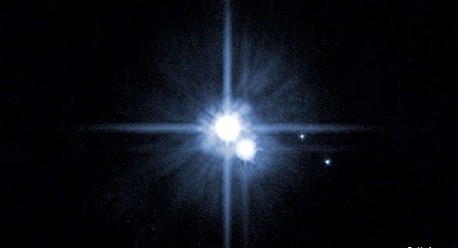The immediate reason was that Pluto did not meet the definition of a planet that was formally agreed, for the first time, at the 2006 IAU meeting. To qualify, the astronomers decided, an object must be in orbit around the sun (so, for instance, Earth’s moon does not count, despite being considerably bigger than Pluto). It must be massive enough to have become spherical under the force of its own gravity (which rules out things like asteroids and comets). And finally, it must have “cleared its orbit”, either by absorbing other nearby objects into itself, or by kicking them out of the way with its gravity. That definition attempts to capture the intuition that planets should be the most notable features of solar systems after their stars. Pluto passes the first two tests, but fails the third. These days, it is clear that Pluto is merely one among zillions of “trans-Neptunian objects” (TNOs), itinerant hunks of rock and ice that drift around in the distant reaches of the solar system.
When Pluto was first discovered, in 1930, its claim to planethood seemed much stronger. At first, astronomers reckoned it was roughly as massive as Earth, based on calculations about how they presumed it was affecting the orbits of Uranus and Neptune, the seventh and eighth planets from the sun respectively. The estimate of Pluto’s mass was then repeatedly revised downwards; first to around the mass of Mars, then (after measurements of Pluto’s reflectivity) to more like 1% of the mass of Earth. The discovery of Pluto’s moon, Charon, allowed the estimate of its mass to be refined further. Today, the accepted value is about 0.2% of the mass of Earth. As Pluto’s estimated mass fell, doubts about whether it should be counted as a full-blown planet rose. They became impossible to ignore in the mid-2000s, with the discovery of other, similarly sized objects beyond the orbit of Neptune. In 2005 a team led by Mike Brown, an astronomer at the California Institute of Technology, announced the discovery of Eris, another big TNO. Eris is almost as large as Pluto (with a diameter of 1,163km, compared with 1,184km for Pluto) and is about 25% more massive. If Pluto counted as a planet, there seemed no reason why Eris should not as well. And who knew how many more Eris-sized objects might lurk out in the darkness beyond Neptune? So the logical thing to do was to demote Pluto.
Some objected that this would require textbooks to be rewritten and would make wall-charts obsolete. But that is, in fact, a good thing. Pluto`s reclassification is a very public demonstration of the way science works: when new evidence emerges that overturns what was previously accepted, the facts prevail, and the accepted theory is overthrown in favour of a new, more accurate understanding of the universe. Science is based on evidence, not dogma. And those with a sentimental attachment to Pluto who are still angry about the whole affair (and there are many, including some professional astronomers) may take some solace from the fact that this is not the first time in history that something like this has happened. When Ceres, the most massive of the asteroids (and now another member of the club of dwarf planets), was discovered, in 1801, it too was designated a full-blown planet. Only later, as it became clear that it was merely the largest constituent of a vast, messy disk of rocks orbiting between Mars and Jupiter—what is today called the asteroid belt—was its planetary status rescinded. So you could say that Pluto was kicked out of one very select club (the planets), only to join an even more select group: the club of astronomical bodies formerly known as planets.
More about:
















































